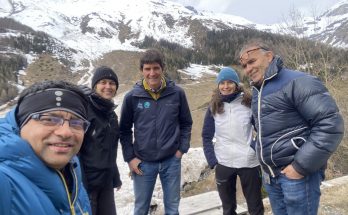As part of the management of risks arising from slope instabilities, the acquisition of interferometric radar (InSAR) datas offer an attractive and relatively inexpensive solution. As this science is evolving, there are many possibilities for exploiting this data. The Aosta Valley Geological Activities department wants to create an automated early warning system (EWS), the base of which will be fed by informations from Sentinel 1-A and 1-B radars. To this end, it is necessary to assess the reliability of the data which is supposed to provide for example risk map. The aim of this work is to determine to what extent these data can be used, because there are a number of limiting factors due to the geometric relationships between the terrain to be analyzed and the radar antennas located more than 600 km from the ground. In fact, mountainous area not only present a challenge for the installation monitoring equipment, but also constitutes an conducive environment to the various projection effects of InSAR datas, such as layover effects (mixing of data on the terrain), shadow effects (no data) and the VLOS reduction factor (modification of actual values). Knowing that the coverage rate is not even 100% by combining the data from the two satellites in orbit, it is obvious that a way must be found to properly link the InSAR datas and the datas from the monitoring in situ. It is therefore essential to know where we stand with data for with the validity of the radar interferometric datas : the vegetation, the effect of projection and the VLOS reduction factor are the aspects having the greatest impact on the reliability of theses datas.
Disaster Risk Reduction, Hazard Assesment, and Risk Analysis

